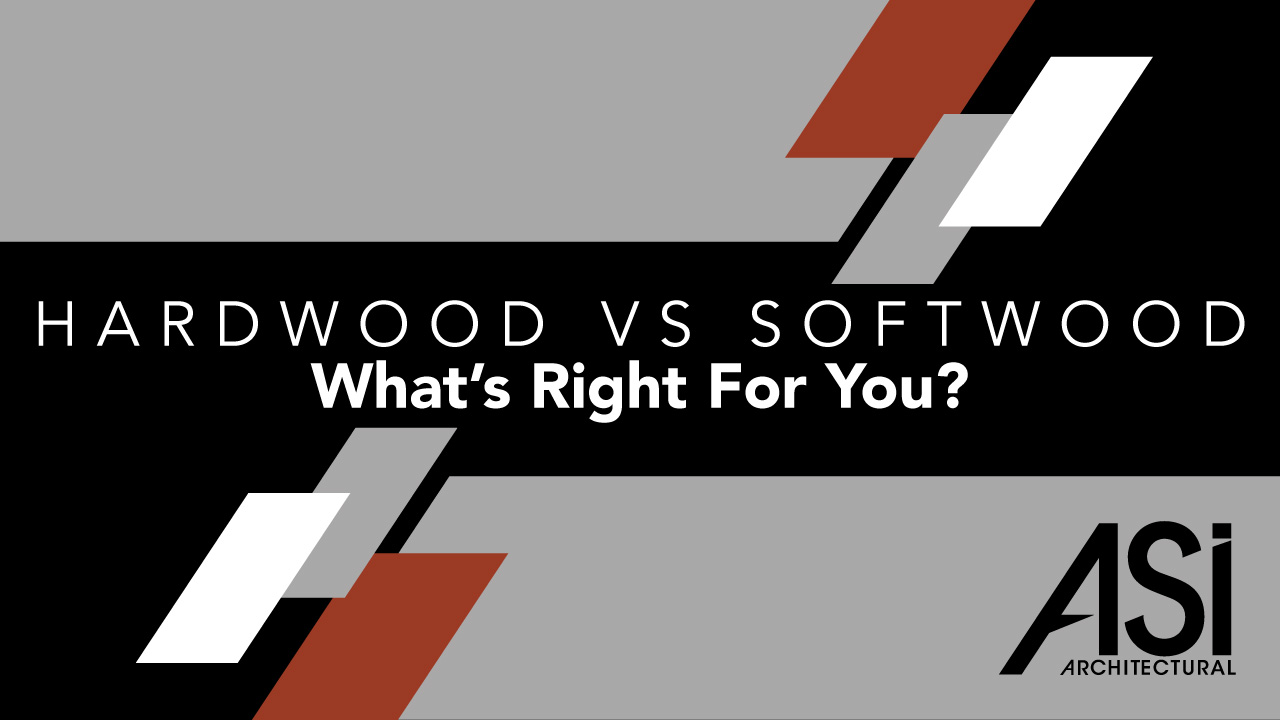
Cost, durability, and acoustic absorption are all factors that designers and architects should take into consideration when looking at what woods to choose. ASI Architectural looks at the difference between hardwoods and softwoods, and what variety is right for your next project.
All In The Seeds
Classifying a hardwood vs. a softwood tree actually has nothing to do with the hardness of the wood itself. The classification comes from what seeds each tree produces. Hardwoods, also known as angiosperms, (a Greek word that means “vessel seed”) have seeds that are encased in a shell or fruit. Woods in the angiosperm family include walnut, maple, oak, and others.
Softwood, however, is also known as gymnosperm (the Greek word for “naked seed”) and these seeds fall to the ground without any kind of protection and are exposed to the elements. Woods in this family are predominantly coniferous, like pine, spruce, and others. Because of this classification, some “soft” woods like balsa are classified as hardwoods, and some “hard woods like yew are classified as softwood trees.
Hardwood Vs Softwood: What Difference Does It Make?
So you can recognize a tree. What difference do these woods make when you are designing a project?
First, consider the aesthetic of each wood. Hardwoods are generally darker and heavier, while softwoods are a lighter color and much lighter in weight. Another consideration is the cost of each wood. Hardwoods are more expensive while softwoods are cheaper. But, hardwoods are naturally weather-resistant and will last longer than softwoods, which need to be treated to be weather resistant.
Finally, when building anything it’s important to consider the footprint of the project. Hardwoods take longer to grow, longer to dry, and more energy to transport because of its weight. Consider all of these factors when choosing wood for your next project.
Utilizing Wood For Your Next Project
Wood itself is not great at absorbing or diffusing noise. However, when utilized to build diffusers or designed to absorb sound, wood can provide both an aesthetically pleasing and effective acoustic solution.
ASI Architectural offers a large variety of solid wood and wood veneer ceiling and wall solutions for projects, with available sound absorption options for noise reduction. Choose from Beam, Linear, Cloud, Audition, Fusion, Microperf, Cub, Coffer, and Grille-style wood products. Within these styles, ASI Architectural offers a variety of wood species for aesthetic purposes, including Ash, Maple, Beech, Walnut, Red Oak, White Oak, Hickory, Cherry, Natural Bamboo, or Caramelized Bamboo.
High-Performance Materials From ASI Architectural
At ASI Architectural, we provide innovative architectural and acoustical products for designers and architects that meet and exceed expectations. ASI Architectural has a wide variety of solutions from Microperf wood ceilings to metal plank walls. Our goal is to provide you with the materials to make your next project look and sound beautiful.
To find out more about ASI Architectural, and to browse all of our products, visit our website.




